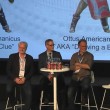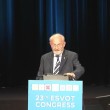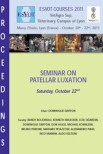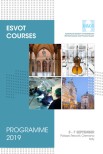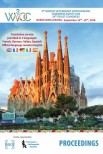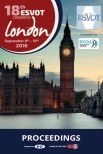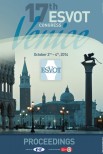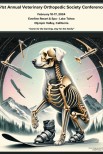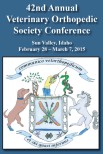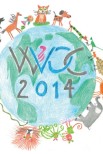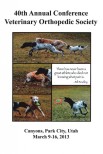Qualifications: BSc (1988) BVMS (1990) (Murdoch, Western Australia), CertSAO (RCVS, 1996), DSAS(orth) (RCVS, 1999)
Qualifications: BSc (1988) BVMS (1990) (Murdoch, Western Australia), CertSAO (RCVS, 1996), DSAS(orth) (RCVS, 1999)
Employment after graduation: Doncaster, South Yorkshire 1991-1992 (mixed practice)
Locum tenens 1992 (Backpacking around Europe)
Rochester, Kent 1992 – 1995 (small animal practice)
University of Glasgow Veterinary Hospital, Scotland, 1995-1996, internship in small animal surgery (junior clinical scholarship)
University of Glasgow Veterinary Hospital, Scotland, 1996-1999, residency in small animal orthopaedics (senior clinical scholarship)
Murdoch University Veterinary Hospital, Western Australia, 1999-2003, Registrar in small animal surgery
Locum tenens, Perth, Western Australia 2003-2004
Rivergum Referral Services, Perth, Western Australia, 2004- current
Current professional career Managing director of Rivergum Referral Services. RRS is a referral only hospital that accepts cases in the small animal fields of surgery (predominantly orthopaedics), neurosurgery, neurology and ophthalmology.
G.S-S. Usually some particular incident or person seeds ones mind, when one is quit young, as to what one wants to become to earning a living . What was the stimulus that decided to become a veterinarian?
N.G. Both of my parents worked as doctors so I had exposure to medical practice from a young age. Whilst a lot of aspects of medicine appealed to me, the thought of treating people never did. The concept of treating animals always had a much greater appeal. To a certain extent I am also of the James Heriot generation, with the books and television series being prominent in my early school years. In fairness I should also confess that nothing else appealed to me –engineering, accountancy and law all seemed a little dry and I could not see myself earning a living in the arts.
G.S-S. After graduating and gaining some experience I assume that a particular situation arose that drew you to the specialty of orthopaedics. Please explain to readers how that evolution occurred with you?
N.G. I recognised from very early in my career that I would like to pursue some form of specialisation and initially I was interested in becoming an equine surgeon. With my first job in South Yorkshire I worked in a very mixed practice but found myself doing more and more horse work after the retirement of one of the local horse vets. Whilst I greatly enjoyed working with horses I gradually came to realise that my lack of equine background (I am city born and raised) was a significant impediment in relating to horse owners, far more so than I ever experienced when dealing with farmers. Ultimately I decided that small animal practice was where my abilities were best suited. When my brother (also a vet) travelled to the UK in 1992 I left mixed practice and joined him travelling continental Europe, interspersed with short periods of locum work in the UK to fund my travels.
On returning to the UK at the end of 1992 I decided to settle into small animal practice. I was fortunate to find employment in a very supportive, multivet small animal practice in the south of England where I started to develop an interest in surgery. My initial forays into orthopaedics were very limited but it was quickly apparent that this was the field that I most enjoyed. When the clinical scholarships at the University of Glasgow Veterinary Hospital were advertised in 1995 it seemed like an ideal opportunity to develop my education and skills so I applied and was fortunate enough to be offered a position. The orthopaedic service at the University of Glasgow was undergoing a period of transition when I first arrived but this had the fortunate result of allowing me to work with a number of eminent surgeons including Dr Andrew Miller, Dr Malcolm Ness and ultimately Dr Stuart Carmichael and Professor David Bennet. The exposure to different styles, skills and areas of interest further stimulated my interest in the field of small animal orthopaedics and when residency in orthopaedics was offered in 1996 I jumped at the opportunity.
G.S-S. Have you developed anyone new techniques of which you are particularly proud? If so kindly discuss them briefly.
N.G Sadly I can make no claim to developing any new techniques. I see myself as a journeyman of veterinary orthopaedics rather than an innovator. I have great admiration for surgeons who push the boundaries of our field but I am conservative by nature and generally only feel comfortable adopting techniques that have undergone appropriate evidence based assessment.
G.S-S. Finally, what developments do you foresee in veterinary orthopaedics?
N.G In my region the changing demographic of the profession combined with increasing client expectation is resulting in growing demand for orthopaedic referral services. I see this trend continuing and likely becoming established as opportunities for young graduates to develop skills in orthopaedic surgery in the general practice environment become fewer. Whilst the canine stifle will almost certainly remain the dominant component of small animal orthopaedic practice I suspect that fore limb lameness, in particular shoulder instability, will be an area of increasing interest.
Perhaps the most interesting area of development that I have seen in recent years is three-dimensional printing. There are already some biomaterials and some metallic implants (e.g. titanium) that are amenable to this technology and it is exciting to think that this could develop to a point where not only orthopaedic models but also custom orthopaedic implants could be printed on the basis of digital imaging of a patient.
